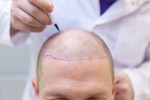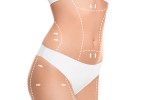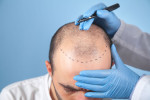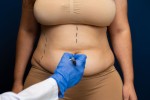A clear, structured diet is essential for weight loss surgery success. What you eat impacts healing, long-term weight loss and energy levels. That’s why following the right meal plan for weight loss is vital after your procedure. Whether you've had gastric sleeve, bypass or balloon, your body needs time to adjust. The right foods support recovery and help you build lasting habits. In this guide, we break down how to build a meal plan for weight loss step-by-step. From early stages to long-term nutrition!
Why Diet Is Crucial After Weight Loss Surgery
After surgery, your stomach size is reduced. This means you’ll feel full faster and eat less. However, this also increases the importance of what you eat. Every bite must count. A strong meal plan for weight loss ensures you get essential nutrients in small portions. It also prevents complications like nausea, dehydration or nutrient deficiencies. Your plan should evolve as your body heals, allowing you to transition through phases smoothly.
Meal Plan for Weight Loss Phase 1: Clear Liquid Diet
This stage begins right after surgery and lasts 1–2 days. It helps reduce strain on your digestive system. You’ll start with:
- Water
- Ice chips
- Clear broth
- Unsweetened herbal tea
- Sugar-free jelly or electrolyte drinks
Sip fluids slowly throughout the day. Avoid caffeine, carbonated drinks or anything with sugar. This phase helps prevent dehydration and gives your stomach time to heal.
Meal Plan for Weight Loss Phase 2: Full Liquid Diet
After the first few days, you’ll progress to a full liquid diet for 1–2 weeks. This includes thicker fluids with added nutrients. Options include:
- Protein shakes
- Skimmed milk
- Smooth soups
- Low-fat yoghurt
- Meal replacement drinks
Your meal plan for weight loss at this point should focus on protein. Aim for at least 60–80 grams daily. Avoid sugar, fat and anything with chunks.
Meal Plan for Weight Loss Phase 3: Puréed Foods
This phase usually lasts 1–2 weeks and helps ease your body into digesting soft foods. Meals should be smooth, blended and free from lumps. Recommended foods include:
- Puréed lean chicken or fish
- Mashed vegetables
- Smooth cottage cheese
- Blended eggs
- Soft fruits like banana or avocado
You should still eat slowly and chew thoroughly. Portion sizes remain small, typically just ¼ to ½ cup. This stage supports safe digestion and nutritional intake.

Meal Plan for Weight Loss Phase 4: Soft Foods
At 4–6 weeks post-op, your plan expands to include soft solids. These foods need minimal chewing and are easy on the stomach:
- Boiled eggs
- Minced turkey
- Steamed vegetables
- Low-fat cheese
- Soft fruit without skin
Continue focusing on protein first, then vegetables and whole grains. Avoid fibrous foods like celery or tough meats, which may irritate your stomach. Gradually increase portion size to about ½ cup to 1 cup per meal.
Meal Plan for Weight Loss Phase 5: Solid Foods
Around 8 weeks post-surgery, most patients can introduce regular solid foods. Now your meal plan for weight loss should start resembling a long-term eating style. Include:
- Lean protein: grilled chicken, fish, turkey
- Vegetables: cooked or raw (if tolerated)
- Whole grains: oats, quinoa, brown rice
- Healthy fats: olive oil, nuts, avocado
Avoid sugar, fried foods and processed snacks. Chew every bite carefully and eat mindfully. This final phase supports lifelong success and sustainable weight management.
Meal Plan for Weight Loss: Key Nutrients to Prioritise
Your post-op body has new demands. Prioritising the right nutrients is essential for healing and health. A good weight loss plan includes:
- Protein: Keeps muscles strong and supports healing
- Fibre: Aids digestion and helps with fullness
- Iron: Prevents fatigue and supports energy
- Calcium and Vitamin D: Protect bone health
- B12: Vital for nerve function and blood cells
Most patients will also take supplements. Always follow your surgeon or dietitian’s advice to prevent deficiencies.
Sample Daily Meal Plan for Weight Loss After Surgery
Once you’re in the solid food phase, here’s a simple example of a balanced day:
Breakfast:
- Scrambled eggs with spinach
- 1 slice of wholegrain toast
- Herbal tea
Snack:
- Low-fat Greek yoghurt or cottage cheese
Lunch:
- Grilled chicken breast
- Steamed broccoli and quinoa
- Water with lemon
Snack:
- Small apple with almond butter
Dinner:
- Baked salmon
- Roasted sweet potato
- Mixed greens with olive oil
This type of weight loss plan focuses on variety, portion control and nutrition.
What to Avoid in Your Meal Plan
Some foods can disrupt healing or trigger discomfort. Common items to avoid include:
- Sugary foods and drinks
- Carbonated beverages
- Alcohol
- Fried or fatty foods
- Tough or fibrous meat
- White bread and pasta
These can lead to dumping syndrome, nausea or stalled progress. Focus instead on clean, nutrient-rich choices that fuel your recovery.
Tips for Long-Term Meal Planning Success
Maintaining your meal plan for weight loss is easier with structure and support. Try these tips to stay consistent:
- Meal prep weekly: Helps you avoid poor food choices
- Track your intake: Use apps to monitor nutrients
- Eat slowly: Give your body time to signal fullness
- Listen to your body: Stop when satisfied, not stuffed
- Stay hydrated: Sip water between meals, not during
Also, consider working with a registered dietitian. They can personalise your plan and offer guidance throughout your journey.
Conclusion
A successful meal plan for weight loss after surgery is about more than calories. It’s a journey of healing, habit-building and sustainable change. By following each phase carefully and focusing on nutrient-rich foods, you give your body the best chance to thrive. From clear liquids to balanced solid meals, each step plays a key role in long-term success. With preparation, support and mindful choices, your transformation can be both healthy and lasting.
For more information and to book a consultation visit the ACIBADEM Beauty Center Obesity Surgery webpage.
Frequently Asked Questions
Each phase lasts 1–2 weeks, depending on your recovery and surgeon’s advice.
No. Skipping stages can cause discomfort or complications. Always follow your post-op schedule.
Opt for high-protein snacks like yoghurt or boiled eggs. Avoid sugar or processed snacks.
Yes, most patients require supplements like B12, calcium and iron to avoid deficiencies.
After 8–10 weeks, you can eat solid foods. But should still make mindful choices when dining out.













